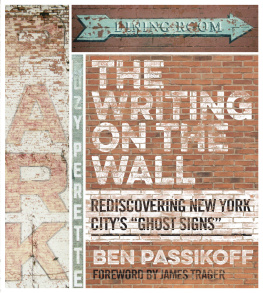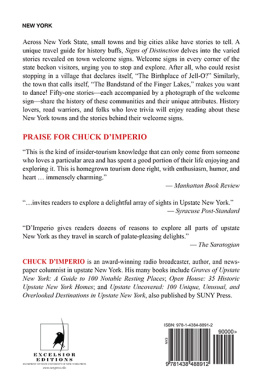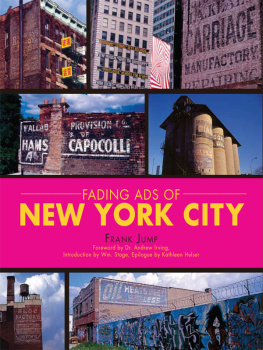
Copyright 2006, 2017 by Ben Passikoff
First Skyhorse Publishing edition 2017
All rights reserved. No part of this book may be reproduced in any manner without the express written consent of the publisher, except in the case of brief excerpts in critical reviews or articles. All inquiries should be addressed to Skyhorse Publishing, 307 West 36th Street, 11th Floor, New York, NY 10018.
Skyhorse Publishing books may be purchased in bulk at special discounts for sales promotion, corporate gifts, fund-raising, or educational purposes. Special editions can also be created to specifications. For details, contact the Special Sales Department, Skyhorse Publishing, 307 West 36th Street, 11th Floor, New York, NY 10018 or .
Skyhorse and Skyhorse Publishing are registered trademarks of Skyhorse Publishing, Inc., a Delaware corporation.
Visit our website at www.skyhorsepublishing.com.
10 9 8 7 6 5 4 3 2 1
Library of Congress Cataloging-in-Publication Data is available on file.
Cover design by Rain Saukas
Cover photo credit Ben Passikoff
Print ISBN: 978-1-5107-0294-3
Ebook ISBN: 978-1-5107-0295-0
Printed in China
DEDICATION
To my mom, who taught me how to organize my life, and to my dad, who taught me how to look beyond the obvious. For your support, I owe you everything.
To my teachers across the years, in all their forms, for teaching me how to put it all together.
And to Rebecca, for all her kindness, patience, and love.
TABLE OF CONTENTS
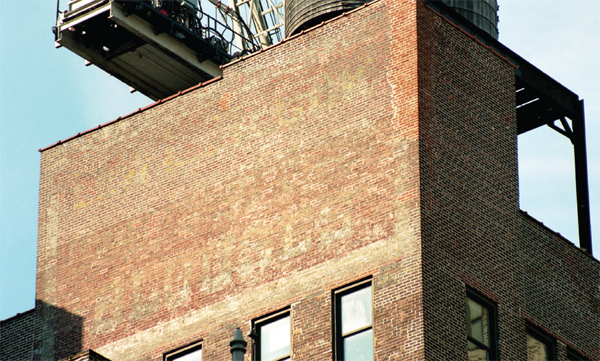
ACKNOWLEDGMENTS
The project in this book took over a year to conduct and put together, and, as you can imagine, I couldnt have done it alone. So many thanks go out to the following people:
The custodians and doormen (all of whom asked to remain anonymous) who gave me access to rooftops and offices when street views alone wouldnt do.
My unofficial uncles, Charles Karmiol, who helped me keep on schedule and finish covering the territory I did, driving me up and down Manhattan streets in his jeep; and Jerry Schmetterer, who utilized his PR skills to make this community service project a success.
George Lois, Benno Schmidt, and James Trager, for their time, thoughts, and contributions to the project; and Alan Zwiebel, for his artistic insights.
Gabriella Warburton, for her copyediting and organizational skills. It is not an exaggeration to say that this book would not exist without her.
My brother Alex, who kept a vigilant eye on the New York City skyline (and still does to this day), scouting signs across the city for me to photograph.
Most of all, my friends, family, readers, and whoever might buy this book. Keep your eyes to the sky

FOREWORD
Ben Passikoff had to work fast. Because these ghosts of New York past are disappearing day by day in a city that is constantly being retrofitted. Soon there will be no signs left to remind us of what used to be.
Is that blue sign still there on the Romanesque Revival apartment building at 3348 Gold Street, the one advertising the Excelsior Steam Power Company? Excelsior put up the structure in 1888, six years after the Edison Electric Illuminating Company opened its first power station at 57 Pearl Street and used it for its coal-fired electrical generators. Excelsior changed its name to the Borough of Manhattan Electric Co., and Consolidated Gas absorbed it along with other such power producers. Consolidated Gas gained control of the New York Edison Co. in 1901, and in 1936 it became Consolidated Edison. Without that blue sign, this history is only words.
Variations on this story abound: when a building comes down, the demolition often reveals a spectral glimpse of yesteryear. A foxhunter near Lincoln Center leaps a fence on his horse to advertise Hunters Baltimore rye whiskey with the slogan, First over the bars. While such fading vestiges may not memorialize great and lasting ideas, they do speak to us across the chasm of decades to remind us of a time before air conditioning, before subways, before escalators, even before electric lights, when horsepower came with harnesses and the whole city smelled of something other than diesel fumes.
Like Caspar in the old Crockett Johnson cartoons (does anyone still remember them?), they are friendly ghosts, these graphic apparitions, and Mr. Passikoff has rendered a service by giving them new life.
James Trager
New York City, NY
June 2006
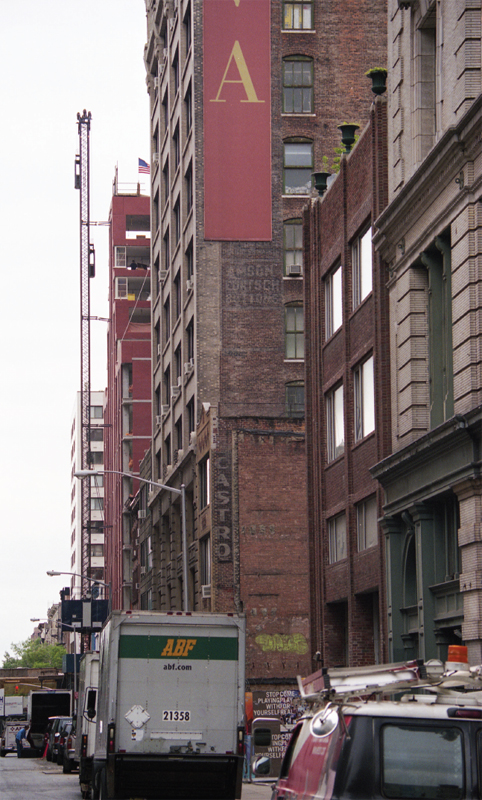
INTRODUCTION
Whenever Ive mentioned this project to people, or when people see me taking photographs of what appear to be blank brick walls and ask what Im doing, they all seem to have the same questions. So, it seemed like a good idea to introduce my book with answers to some Frequently Asked Questions.
How did you get the idea for this project?
I was a member of The Browning Schools photography club throughout high school. When we went out to take pictures in and around Central Park, people shied away from the camera. They didnt want a bunch of kids taking their photos, and that got old pretty fast, so we started taking photographs of inanimate objects. Cars, trees, statues, and buildings.
While taking pictures of buildings, I noticed that some of them had writing on their facades. Not graffiti, but writing that turned out to be messageswhat used to be actual advertising. Most of it was old and really difficult to read, but some of it was still decipherable.
The more I deliberately looked for them, the more I saw. They were right there in front of me, yet somehow blended into the background of the city. The people before me who have involved themselves in this area of interest call them ghost signs . I had to actively work at looking for them in order to see them. I became curious about how many there were, what they advertised, and what I could glean from them about the economic history of New York City throughout the twentieth century.
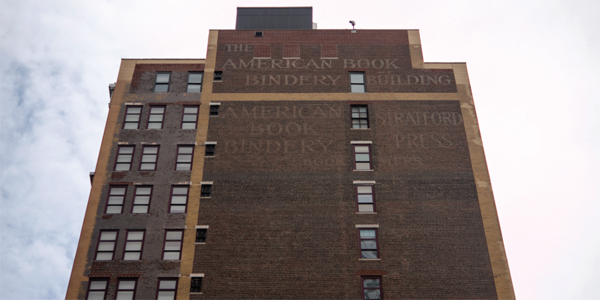
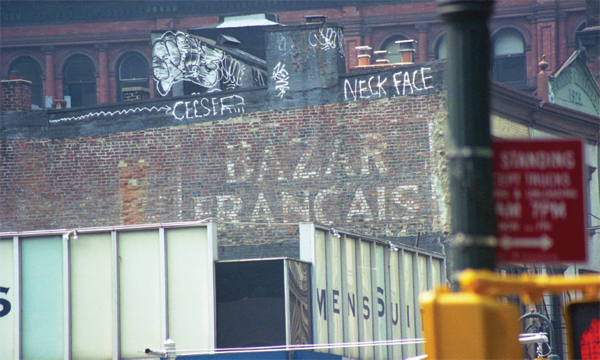
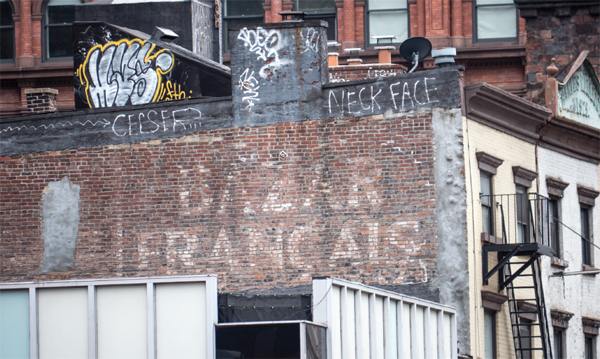
Bazar Franais: This building has been here for eighty-eight years and was built for the Bazar Franais. I took the first photo in 2006 (left) and the second in early 2017 (right). While the sign is still readable, there is a clear difference.
What did the signs turn out to be?
I did some preliminary research and discovered that at one time, these painted signs were a primary form of advertising in the city. They were not printed billboards or posters, but actual signs hand-painted directly onto the sides of buildings. Many had been done when outdoor advertising and newspapers were the only media available. Even with the introduction of radio and television, these kinds of advertisements were still used quite a bit. Even today you can squint at the signs and feel as though youve been transported back to an earlier time in New York. The signs sometimes showed the number of the buildings in which the advertised businesses resided. Some of the taller buildings even had their addresses built into their facade.

